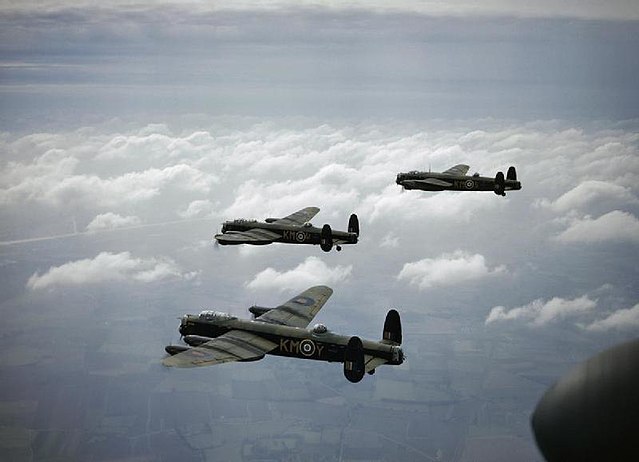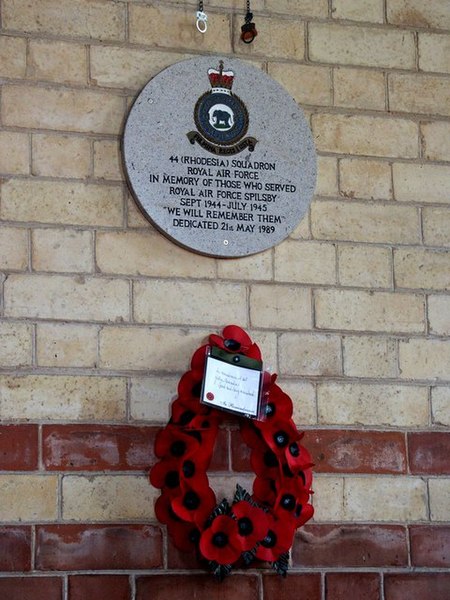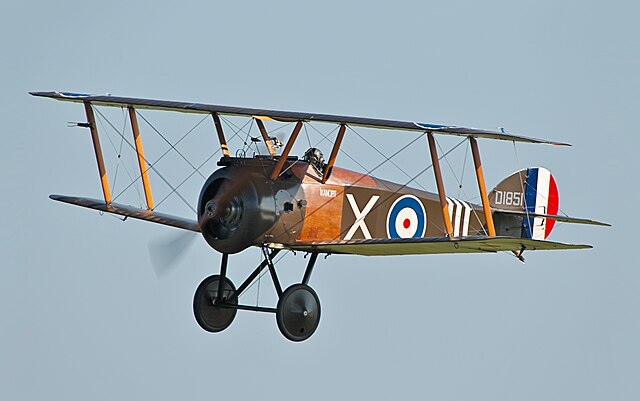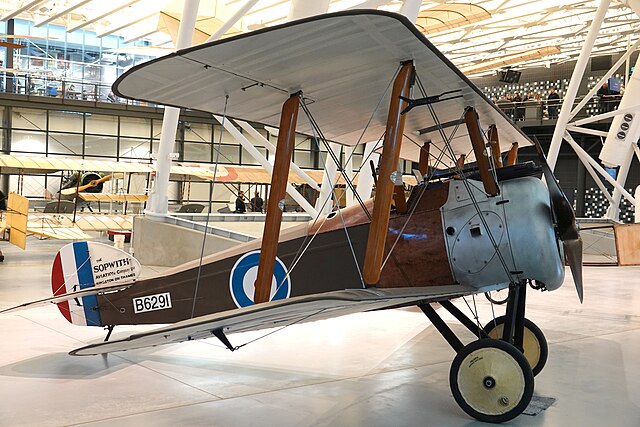Number 44 (Rhodesia) Squadron was an aviation unit of the Royal Air Force. It was active between 1917 and 1982. For most of its history it served as a heavy bomber squadron.
No. 44 Sqn Avro Lancaster B.I in flight, 29 September 1942
Sole surviving crew of 44 Squadron following the Augsburg raid. John Nettleton is sitting second from the left.
Avro Vulcan B.2 XM647 of No. 44 Squadron at RAF Greenham Common, 1980.
A memorial plaque in All Saints Church, Great Steeping, to the members of 44 Squadron who flew from RAF Spilsby
The Sopwith Camel is a British First World War single-seat biplane fighter aircraft that was introduced on the Western Front in 1917. It was developed by the Sopwith Aviation Company as a successor to the Sopwith Pup and became one of the best-known fighter aircraft of the Great War. In total, Camel pilots were credited with downing 1,294 enemy aircraft, more than their counterparts flying any other Allied fighter of the conflict. Towards the end of the war, the type also saw use as a ground-attack aircraft, partly because the capabilities of fighter aircraft on both sides had advanced rapidly and left the Camel somewhat outclassed.
Sopwith Camel
Harry Cobby sitting in the cockpit of a Sopwith Camel
Replica Sopwith Camel showing internal structure
1917 Sopwith F.1 Camel at Steven F. Udvar-Hazy Center








